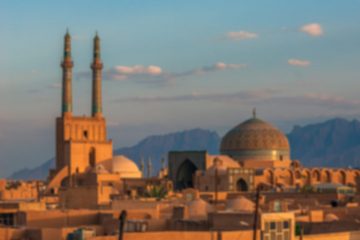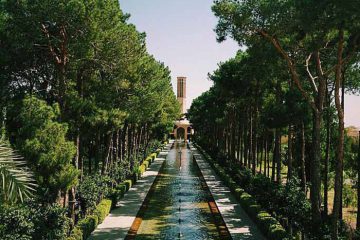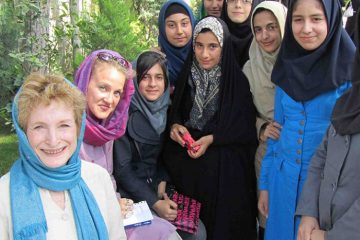Iran Nomads; Resisting Modernity
Nomadic life in Iran has an antiquity of millennia. Perhaps, the first grand migration of nomads to the plateau of Iran in 2nd millennium BC, was of the Aryans who established the grandest of empires in the world. Hence, culture and history of Iran are intricately intertwined with Iranian nomads from politics to arts. Iranian nomadic tribes, although now dwindling, have played a pivotal role in the riches of Iranian culture from music and handicrafts to patriotic valor, among whom are Bakhtiari nomads and Qashqai nomads.
Iran nomads, comprising an accountable portion of Iranian society in the past centuries, have played decisive roles in politics from raising dynasties to power, such as the Safavid or Qajar, to the success of constitutional revolution in 1906. Counting on their formidable nomadic character as warriors, they were integral to defending the country against foreign attacks as well.
>> Iran Tours 2020 & 2021 (Click Here)
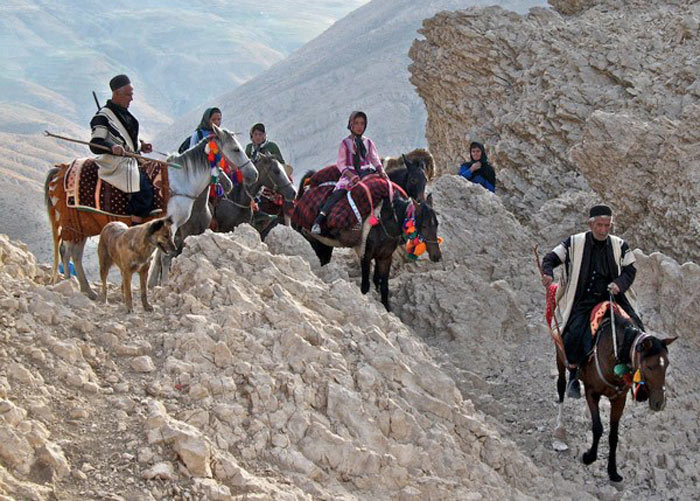
Bakhtiari Nomads, Largest Nomadic Population of Iran
Read Also: Iran Festivals, Most Celebrated Festivals of Iran
#1 Different Groups of Nomads in Iran
Different Groups of Nomads in Iran : Currently there are 17 Iranian nomadic tribes all around Iran. Different ethnic groups such as Lurs, Kurds, Turcs, etc. have made up the various Iranian nomads for millennia. Iranian Nomads migrate twice a year before the hot and cold seasons between highlands and lowlands.
Each tribe is unique in their dialect, music, handicrafts, traditional clothing and deep-seated traditions. Iran nomads, although shrinking, are still deeply dedicated to their traditional rites. Each Iranian tribe celebrates or mourns different occasions in accordance with their unique ancestral traditions, while folkloric music and dance plays a significant role in every occasion.

Wedding among Bakhtiari nomads
Nomads of Iran are famous for their bravery, patriotism and loyalty to their traditions. Here is a brief introduction of 3 major Iranian nomadic tribes.
#2 Bakhtiari Nomads
Bakhtiari Nomads are Iran’s largest nomadic tribe (187,777; 2006 census). They are part of the Lur ethnic group. They inhabit a vast area of southwestern Iran, in Chaharmahal and Bakhtiari and eastern Khuzestan, Lorestan, Bushehr, and Isfahan provinces, mainly in Zagros Mountains.
Bakhtiari nomads have had a crucial role in politics of Iran in the past centuries, especially in defending sovereignty of Iran and the Iranian Constitutional Revolution in 1906.
Hellbent on upholding their Bakhtiari traditions, Bakhtiari nomads are also lauded for their remarkable music. Bakhtiari handicrafts such as rugs and kilims, are famous among Iranian handicrafts.
The American silent move “Grass: A Nation’s Battle for Life “ (1925), is an exceptional testimony to the vigorous lifestyle of Bakhtiari Nomads.

Bakhtiari Nomads in their traditional Costumes
Read Also: What is Iran religion?
#3 Qashqai Nomads
Qashqai Nomads make up Iran’s second largest nomadic tribe (112,430; 2006 census). They speak Turkic, and inhabit a vast area from Isfahan to Persian Gulf, concentrated in Province of Fars, and spreading to Bushehr, parts of Chaharmahal and Bakhtiari and Isfahan.
Qashqai carpets are lauded as one of the most famous Persian nomadic weaves, for their design and high quality wool. Qashqai rugs are sometimes referred to as Shiraz rugs, as the city was their major market place. They are sometimes referred to as “Shiraz” because Shiraz was the major marketplace for them in the past.
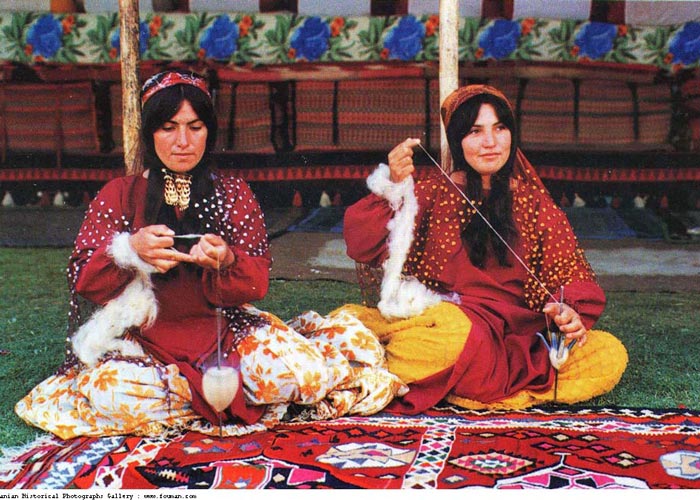
Qashqai Women Spinning Yarn from Wool
#4 Shahsavan Nomads
Shahsavan Nomads, 3rd largest Iranian nomadic tribe, mainly inhabit northwestern Iran, Provinces of Ardabil, East Azerbaijan and Gilan. They speak Azeri Turkic language.
The name of the tribe means “Those who Love the King” pointing to one among many historical accounts that Shah Abbas of Safavid Dynasty formed this tribe as defendant of the king’s territories against rebellious Turkish tribes.
Again, Shahsavan nomadic weaves are among the best Persian weaves.

Shahsavan Women Making Dairy Products
#5 Iranian Nomads Lifestyle
Iranian Nomads Lifestyle : Owing to Iran’s varied climate, Iranian nomads practice vertical migration, meaning they move to highlands and mountains in the hot seasons and the lower plateaus in the cold season, in search of lush pastures for their cattle and suitable weather in different regions of Iran.
Before the advent of motor vehicles, Iran nomads had to commute through the fiercest of unpaved routes through wild rivers, over snowy mountains taking with them all their life, their belongings, tents and cattle. It would take them several weeks to reach their seasonal settlements of 4-5 months maximum. Today, paved roads and vehicles have highly facilitated their migration.

Women take active part in nomadic life
Iran nomads mainly subsist on cattle herding, an the semi-settled nomads of Iran engage in agriculture too. They are highly self-sufficient and depend on their own expertise and their livestock to address everyday necessities, from dairy to producing, setting up and furnishing their tents.
Iran nomads are remarkably committed to their hierarchical social structure and are fiercely resisting assimilation into mainstream Iranian society.
#7 Population of Iran Nomads
Population of Iran Nomads : Iranian nomads, in the 1930’s, comprised 25% of Iran’s population of 8 million. The percentage has now shrunk to 2%. According to 2008 census, there are 17 prominent tribes around Iran, with a population of 563,313, with Bakhtiari nomads and Qashqai nomads being the largest groups, respectively, comprising 45% of the nomads’ population.
After millennia living a nomadic life, Iran nomads have resisted modernity for decades due to their isolated nomadic lifestyle; Adherence to deep traditions and hierarchical structure have left little room for change. However, widespread urbanization, internet and higher education and better job opportunities have made their numbers dwindle.
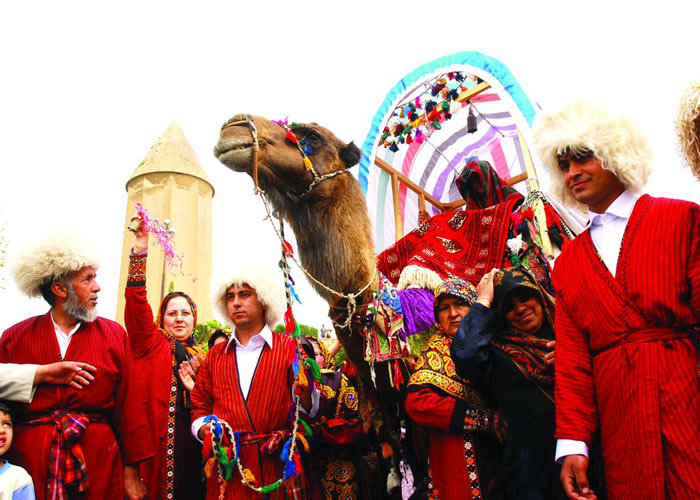
Wedding Ceremony among Turkmen Nomads of Iran
It is worth noting that suppression of the nomads of Iran during the first Pahlavi king (1930’s) was the first huge hit at the maintenance of nomadic life in Iran.
#8 Iranian Nomads Handicrafts
Iranian Nomads Handicrafts : Subsisting mainly on cattle herding, Iran nomads are one of the major producers of Iranian handicrafts, most prominently in the field of weaving, due to access to wool from their livestock. Most famous of their handicrafts are nomadic Persian rugs and flat weaves such as kilims and Jajims.
Nomadic weaves are highly precious for their authentic and inspired designs – as they are the product of a nomad woman’s inspiration from nature or deep-rooted traditional symbols contrary to urban rugs, their natural color and materials.

Qashqai Woman Weaving Rug on Portable Horizontal Loom
Handmade traditional shoes (such as Giveh), woven bags, tents, and decorative items are also among the popular nomadic handicrafts.
#9 Visiting Iranian Nomads
Visiting Iran Nomads can be an extraordinary experience. Iranian nomadic culture has its roots in ancient times, and visiting Iran nomads is the perfect opportunity to closely touch on the nomadic lifestyle in the modern world, with all its splendor.
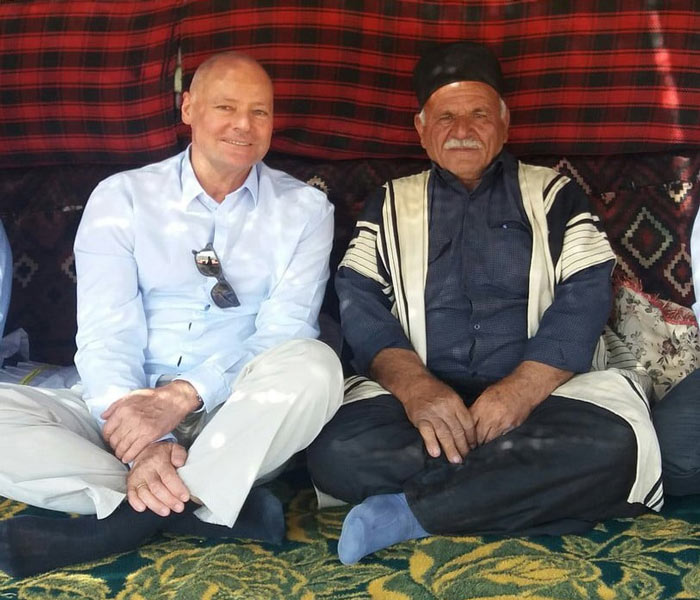
German Ambassador in Iran spending time with Bakhtiari Nomads
Spending the night or being treated with a meal in a nomadic tent in the heart of nature, enjoying the nomadic music and dance, and above all, meeting men and women who hold up their nomadic personality against all temptations of modernity is an experience not frequently available to tourists.
Read Also: Iranian Food; An Unbeatable Deliciousness
